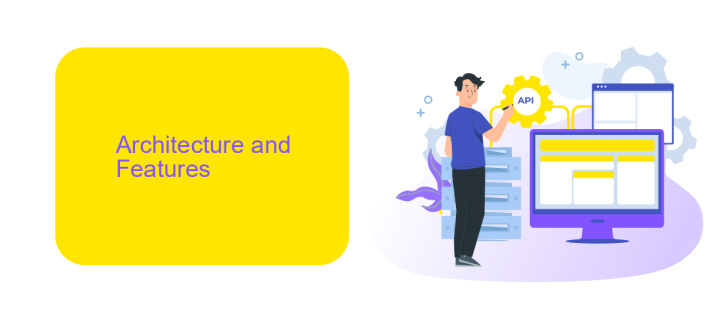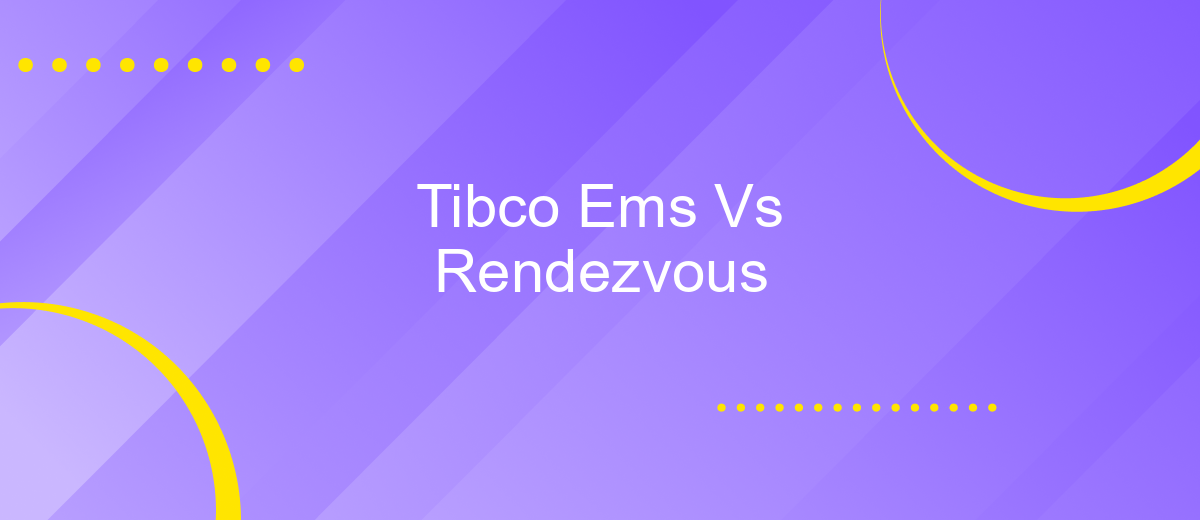Tibco Ems Vs Rendezvous
When it comes to enterprise messaging solutions, TIBCO offers two powerful options: TIBCO Enterprise Message Service (EMS) and TIBCO Rendezvous. Both platforms provide robust messaging capabilities, but they cater to different needs and use cases. This article aims to compare TIBCO EMS and Rendezvous, highlighting their key features, strengths, and differences to help you make an informed decision.
Introduction
In the realm of enterprise messaging systems, Tibco EMS and Rendezvous stand out as two prominent solutions. Both are designed to facilitate the seamless exchange of information across diverse applications and systems, making them essential tools for businesses that rely on real-time data communication. Understanding the differences and unique features of these two platforms is crucial for making an informed decision about which one best suits your organizational needs.
- Tibco EMS: Known for its robust performance and reliability, Tibco EMS offers a comprehensive set of features for enterprise messaging, including support for JMS (Java Message Service) and integration with various middleware systems.
- Rendezvous: Tibco Rendezvous excels in high-speed message delivery and is particularly well-suited for applications requiring low-latency communication. It uses a decentralized architecture to ensure efficient data distribution.
Choosing between Tibco EMS and Rendezvous often depends on specific use cases and requirements. For businesses looking to streamline their integration processes, tools like ApiX-Drive can provide additional support by automating and simplifying data flows between disparate systems. This can enhance the overall efficiency and effectiveness of your messaging infrastructure.
Architecture and Features

TIBCO EMS (Enterprise Message Service) and TIBCO Rendezvous are both robust messaging solutions designed for enterprise-level integration. TIBCO EMS follows the Java Message Service (JMS) standard, providing a unified messaging interface that supports both point-to-point and publish/subscribe messaging models. It ensures reliable delivery, scalability, and high availability through features like message persistence, load balancing, and fault tolerance. TIBCO Rendezvous, on the other hand, uses a proprietary messaging protocol optimized for high-speed, low-latency communication. It is particularly well-suited for real-time data distribution in environments where performance is critical.
Both TIBCO EMS and Rendezvous offer extensive integration capabilities, making them suitable for complex enterprise ecosystems. For instance, integrating with external services can be simplified using platforms like ApiX-Drive, which provides connectors for various applications and APIs. This allows seamless data flow between TIBCO solutions and other systems, enhancing overall operational efficiency. While EMS excels in environments requiring JMS compliance and robust message management, Rendezvous is ideal for scenarios demanding rapid message dissemination with minimal latency.
Performance and Scalability

When it comes to performance and scalability, both Tibco EMS and Rendezvous offer robust solutions tailored to different needs. Tibco EMS is designed for high-throughput messaging, ensuring low latency and high reliability, making it ideal for enterprise-level applications. On the other hand, Tibco Rendezvous excels in real-time data distribution, providing efficient multicast capabilities that are perfect for applications requiring rapid data dissemination.
- Tibco EMS supports horizontal scaling through clustering, allowing for the seamless addition of new servers to handle increased loads.
- Rendezvous leverages a distributed architecture that can scale efficiently by adding more nodes, enhancing its ability to manage large volumes of real-time data.
- Both systems offer robust fault tolerance mechanisms, ensuring continuous operation even in the event of hardware failures.
For businesses looking to integrate these messaging systems with other applications, services like ApiX-Drive can simplify the process. ApiX-Drive provides an easy-to-use platform for setting up integrations, allowing organizations to streamline their workflows without extensive coding. This can significantly enhance the performance and scalability of the overall system by ensuring smooth and efficient data exchange between different components.
Security and Reliability

When evaluating Tibco EMS and Tibco Rendezvous, security and reliability are critical aspects to consider. Both messaging systems offer robust features to ensure data integrity and secure transmission, but there are distinct differences in their approaches.
Tibco EMS employs advanced encryption protocols and supports SSL/TLS to protect data during transmission. It also offers comprehensive authentication and authorization mechanisms, ensuring that only authorized users can access the messaging system. On the other hand, Tibco Rendezvous focuses on ensuring message delivery through its reliable multicast protocol, which is particularly beneficial in high-throughput environments.
- Encryption: Tibco EMS uses SSL/TLS for secure communication.
- Authentication: EMS provides strong user authentication and authorization.
- Reliability: Rendezvous uses a reliable multicast protocol to ensure message delivery.
- Integration: Both systems can be integrated with ApiX-Drive for enhanced flexibility and automation.
In summary, while Tibco EMS excels in security with its robust encryption and authentication features, Tibco Rendezvous stands out in reliability due to its multicast protocol. Depending on your specific needs, either system can be a suitable choice, and integration tools like ApiX-Drive can further streamline and secure your messaging infrastructure.
Conclusion
In conclusion, both Tibco EMS and Rendezvous offer robust messaging solutions tailored to different enterprise needs. Tibco EMS excels in providing a secure, scalable, and high-performance messaging platform ideal for complex and large-scale environments. Its support for JMS and integration capabilities make it a versatile choice for businesses requiring reliable and consistent message delivery.
On the other hand, Tibco Rendezvous stands out for its simplicity and efficiency in scenarios demanding high-speed, low-latency communication, particularly in real-time applications. Its decentralized architecture ensures minimal overhead and maximizes performance. For organizations looking to streamline their integration processes, tools like ApiX-Drive can further enhance the capabilities of both Tibco EMS and Rendezvous by enabling seamless connectivity between various applications and services, thus optimizing workflow automation and data synchronization.
- Automate the work of an online store or landing
- Empower through integration
- Don't spend money on programmers and integrators
- Save time by automating routine tasks
FAQ
What are the main differences between Tibco EMS and Tibco Rendezvous?
Which one is more suitable for real-time data distribution?
Can Tibco EMS and Tibco Rendezvous be used together in a single architecture?
What are the typical use cases for Tibco EMS?
How can I automate the integration and configuration of Tibco EMS and Tibco Rendezvous?
Apix-Drive will help optimize business processes, save you from a lot of routine tasks and unnecessary costs for automation, attracting additional specialists. Try setting up a free test connection with ApiX-Drive and see for yourself. Now you have to think about where to invest the freed time and money!


